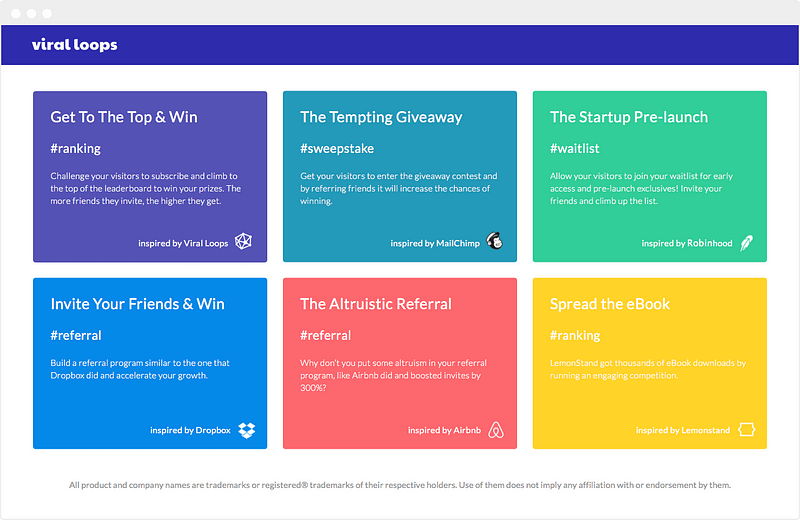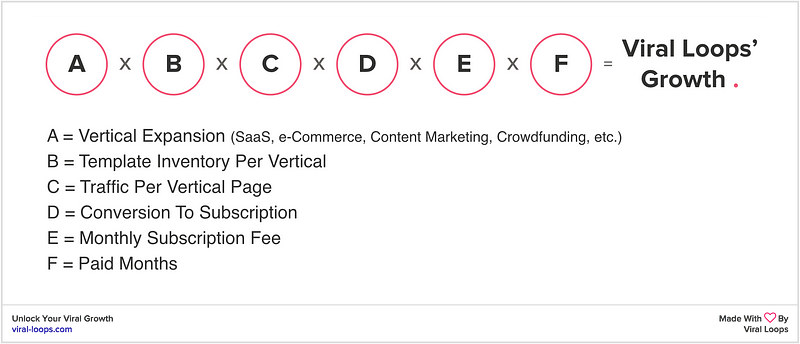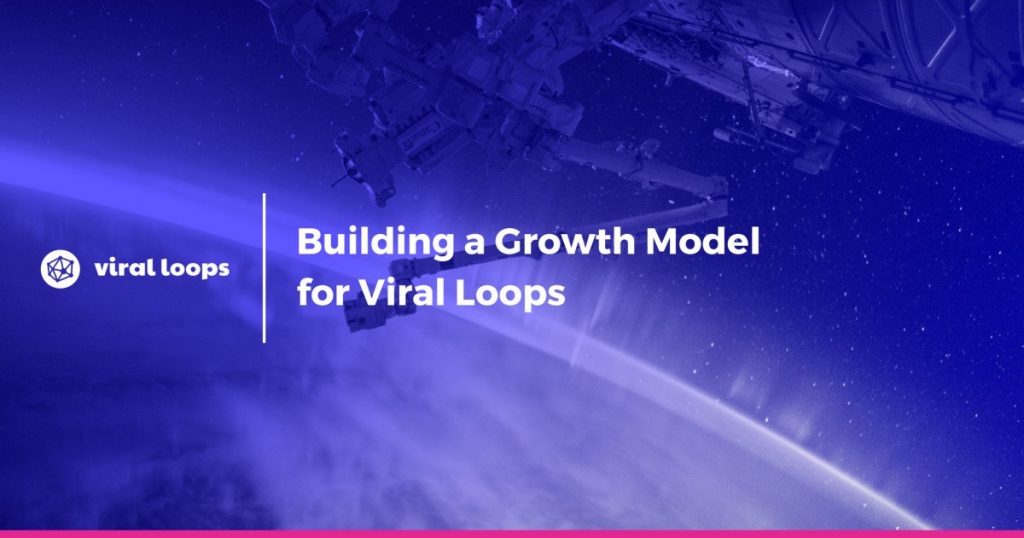The Growth Pitfall
When most startups begin their journey, they focus solely on their product. They try to make it pixel perfect and create the best UX out there, because they think that a great and beautiful product is all what they need to get customers and help them grow. It’s a prerequisite, but not enough.
The same mindset applies when they form their teams. They try to find the best product manager, designer and some stellar engineers. But when it comes to their marketer (if they look for one), they will just ask him whether he has heard about growth hacking, tried any hacks, and is familiar with A/B testing.
Working the last years on growth, we decided to follow a different approach to building the team of Viral Loops. That was, what people like Paul Grahamand Gabriel Weinberg talk about. So we started putting growth into our product’s and team’s DNA. I think that this is the first step that all startups should take no matter if they are bootstrapped or raised $1 million of seed funding. We raised $280K but I’ll share our lessons learned in a different post.
Modelling Growth: The Equation
Your company’s growth model is the first thing you should design before brainstorming around any customer acquisition channels and growth tactics. Actually, you should do this before even starting building your product.
The first time I read about it was from Andy Johns on his article at First Round Review, in which he shares his process of building great growth teams and the factors of sustainable growth. Andy has helped companies like Facebook, Twitter and Quora grow.
As Hila Qu, PM for Growth at GrowthHackers.com points out at “How To Build A Growth Model (Part 1):”
“A growth model is an equation that tells you what are the different variables in your business and how they work together and translate into growth.”
In order to build our own model we started with a basic equation:

Top Of Funnel: This is the first factor of your model and is about how your product can get traffic and conversions. In our case, the conversion at this step are Trial Signups. Regarding traffic, we need to find ways to bring new and qualified leads to our website.
Magic Moment: The magic moment is one of my favourites. Your product should hook people really quickly and excite them. Viral Loops is a viral and referral marketing platform, that helps you launch referral programs, sweepstakes, competitions and pre-launch campaigns. While we have some strong competitors, we took another approach to differentiate ourselves and WOW our customers.
Our platform is template-based, meaning that our customers do not have to think what would work for their industry or company, but rather choose one of our templates and start their campaign in minutes. This removes a lot of marketing friction, while it increases the chances for the campaign to be successful.

Core Product Value: Here you realise whether your product solves a real problem. Our core value is that we consider Viral Loops, more than a platform. We build a new acquisition channel for our customers. So, when they use it, we need to make sure that they get more customers, leads, revenue and growth. If this doesn’t happen constantly and in an increasing way, then we fail.
Modelling Amazon’s Growth
Based on the growth equation above, we can model Amazon’s growth as illustrated in the image below. Despite we could go in more depth, the model below illustrates the thought process behind.

Vertical expansion (A) refers to the number of verticals Amazon expands. The more verticals it covers (books, electronics, music, etc.) the more its growth accelerates. Product Inventory (B) is also crucial. Think of the level of growth Amazon could achieve if they had 10 books available instead of, say, 10 millions. The remaining variables are quite obvious, so we’ll examine them in our own model in a while.
Stealing Amazon’s Growth Equation
Each product has its own growth model and you should treat it differently. However in our case, we spotted some similarities with the model above. That gave us a great idea for adding more value to our customers as well as differentiating even more from our competition.
And here is the 1st version of our growth model:

Vertical Expansion (A): Along with the template approach of our product, we decided to follow verticals, too. Instead of just building a referral marketing platform with the option of creating generic campaigns, like a referral campaign that anyone could run, we create tailor-made templates for different verticals (e.g. Startups, e-Commerce and Content Marketing).
This empowers our product and marketing. First, it helps us focus on specific verticals and niches to start with, and then expand our offering to new promising industries. It also gives us the opportunity of aligning our product with our marketing efforts easily, as well as prioritize our features.
To make things simpler, let’s take for example the Startup vertical, which is one of the industries we’re focusing right now. I know that startups may cover a wide range of companies, but all these companies have similarities.
For example, a startup, like us, who just gets started, want to get early traction and test 2–3 customer acquisition channels. Most probably has heard of Dropbox, Airbnb and Robinhood as well as use MailChimp and Slack. These characteristics tell us what templates we should create, which integration we should build first and what language we should use in our landing pages.
Template Inventory Per Vertical (B): This is one of the most important aspects of our model. The more templates we offer, the more customers we can serve and retain. Yes, this is key for retention, too, as our customers have multiple possibilities. For instance, they may use a template for a short-lasting campaign (e.g. a giveaway that runs for one month) and another long-lasting one (e.g. Airbnb’s referral program), in parallel.
This is key both for our magic moment and the core value. Think of how a customer feels when he sees that he can use lots of templates for his company and not just one referral program. For example, we just launchedViral Loops for Startups, for the Startup Vertical, offering two templates: a Robinhood-style pre-launch campaign and a Dropbox-style referral program and we’ll be releasing more templates soon.
Traffic Per Vertical Page (C): This is the variable brings customer acquisition into the model. We need to get the right people to the right landing page of each vertical. The challenge is to find channels and tactics to drive qualified and increasing traffic to these pages.
Regarding startups, we built a new page and kickstarted some non-scalable tactics, like submitting to startup directories and communities, and getting in touch with founders and people in the startup ecosystem who may be interested in trying our product. We also started experimenting with paid acquisition.
Conversion To Subscription (D): As most SaaS companies, we offer a free trial. So, one of our main goals is to convert trials to paid customers. We do this by optimizing our first time user experience (FUE), offering great support and content (e.g. product demos, webinars, etc.)
Monthly Subscription Fee (E): Not surprisingly, we offer our product at a monthly subscription fee. Our pricing is based on features and on how many people participate in our referral campaigns.
One of the key points here is that we have included the number of participants in it. The more participants (or leads) our customer gets, the more he pays us, meaning that he won’t pay us just for the features but also for the real success, which is to generate leads and revenue for his business. This motivates us to build features that maximize this number.
Paid Months (F): Last, we included the duration a customer pays for Viral Loops. This is an indicator of our retention and helps us calculate our Lifetime Value.
If we wanted to do the math more accurately we could be more specific and more proper ratios instead of some variables (e.g. retention rate and more engagement metrics). However, this high-level modelling really helps us design and build our product and keep our marketing totally aligned and focused on things that move the needle.
What do you think about it?
We’d love to get your feedback and also discuss about your model! Just leave a response below 🙂
